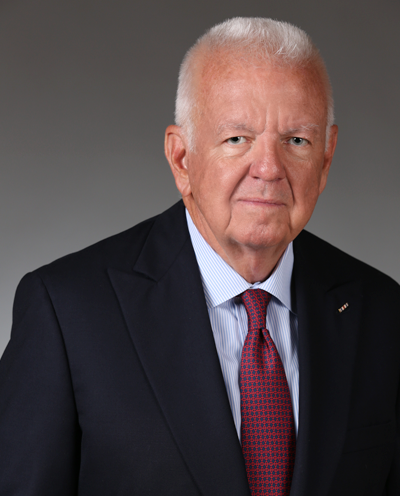- Lefamulin was shown to be non-inferior to moxifloxacin, with 76.8% of lefamulin-treated patients meeting the efficacy endpoint of Investigator Assessment of Clinical Response (IACR) at Test of Cure (TOC), compared to 71.4% of patients treated with moxifloxacin
- Lefamulin was generally safe and well-tolerated in Chinese adults
- Greater Chinese rights to lefamulin will be held by
Sumitomo Pharmaceuticals (Suzhou) Co., Ltd. , a wholly-owned subsidiary of Sumitomo Dainippon Pharma Co., Ltd.
Sinovant’s multi-center, randomized, double-blind trial was designed to evaluate the safety and efficacy of intravenous (IV) to oral lefamulin compared to IV/oral moxifloxacin in 125 subjects with CABP. Subjects were randomized 2:1 to lefamulin and moxifloxacin and stratified by prior antibiotic exposure, pneumonia severity index (PSI) risk class, and renal impairment. Study drugs were dosed in double-dummy double-blinded fashion (lefamulin: 150 mg IV every 12 hours, 600 mg oral every 12 hours; moxifloxacin: 400 mg IV once daily, 400 mg oral once daily).
Lefamulin met the primary endpoint of non-inferiority vs. moxifloxacin for Investigator Assessment of Clinical Response at Test of Cure (IACR-TOC) in the modified intent to treat (mITT) population, with success rates of 76.8% (n = 63/82) for lefamulin and 71.4% (n = 30/42) for moxifloxacin. This finding was consistent across subgroups. On the key secondary endpoint of IACR-TOC in the clinically evaluable (CE) population, success rates were 86.0% (n = 49/57) and 86.2% (n = 25/29) in the lefamulin and moxifloxacin arms, respectively. These results are similar to those observed in the global Phase 3 LEAP 1 and LEAP 2 clinical trials conducted by Nabriva.
Consistent with previously reported clinical trial results, lefamulin was observed to be generally safe and well-tolerated, with an overall rate of treatment-emergent adverse events (TEAEs) comparable to that of moxifloxacin. The vast majority of TEAEs in both treatment arms were mild-to-moderate in severity, with serious adverse events (SAEs) occurring in 4% of lefamulin-treated patients and 10% of moxifloxacin-treated patients. TEAEs leading to discontinuation were uncommon and observed in just 5% of subjects in both treatment arms.
“We are delighted with the results of this trial,” said Dr.
In addition, Sinovant has entered into an agreement with
“We are excited to accelerate the availability of lefamulin to Chinese patients upon approval,” said
“We are eager to enter into the next phase of lefamulin’s life cycle in China,” said
About Lefamulin
Lefamulin (marketed by Nabriva in
About Sinovant
Sinovant is a Chinese biopharmaceutical company dedicated to conducting innovative biomedical R&D in
About Nabriva Therapeutics plc
Nabriva Therapeutics is a biopharmaceutical company engaged in the commercialization and development of innovative anti-infective agents to treat serious infections. Nabriva Therapeutics received U.S. Food and Drug Administration approval for XENLETA® (lefamulin injection, lefamulin tablets), the first systemic pleuromutilin antibiotic for community-acquired bacterial pneumonia (CABP). Nabriva Therapeutics is also developing CONTEPO™ (fosfomycin) for injection, a potential first-in-class epoxide antibiotic for complicated urinary tract infections (cUTI), including acute pyelonephritis. Nabriva entered into an exclusive agreement with subsidiaries of
About
Forward-Looking Statements
Any statements in this press release about future expectations, plans and prospects for
Sinovant Contact:
Nabriva Contact:
ir@nabriva.com
Source: Nabriva Therapeutics US, Inc


 René Russo, PharmD, BCPS
René Russo, PharmD, BCPS Roger J. Pomerantz, M.D., F.A.C.P.
Roger J. Pomerantz, M.D., F.A.C.P. Christine Ann Miller
Christine Ann Miller Graham G. Lumsden
Graham G. Lumsden Marco Taglietti, M.D.
Marco Taglietti, M.D. Ankit Mahadevia
Ankit Mahadevia Jeffrey Stein, Ph.D.
Jeffrey Stein, Ph.D. Evan Loh, M.D.
Evan Loh, M.D. Michael Dunne, M.D
Michael Dunne, M.D Ciara Kennedy, Ph.D.
Ciara Kennedy, Ph.D. Ted Schroeder
Ted Schroeder Kevin Finney
Kevin Finney

 Stephen Conafay
Stephen Conafay Christopher J. Burns, Ph.D.
Christopher J. Burns, Ph.D.

 Corey Fishman
Corey Fishman Felix Faupel
Felix Faupel Adrian Nivoliez
Adrian Nivoliez